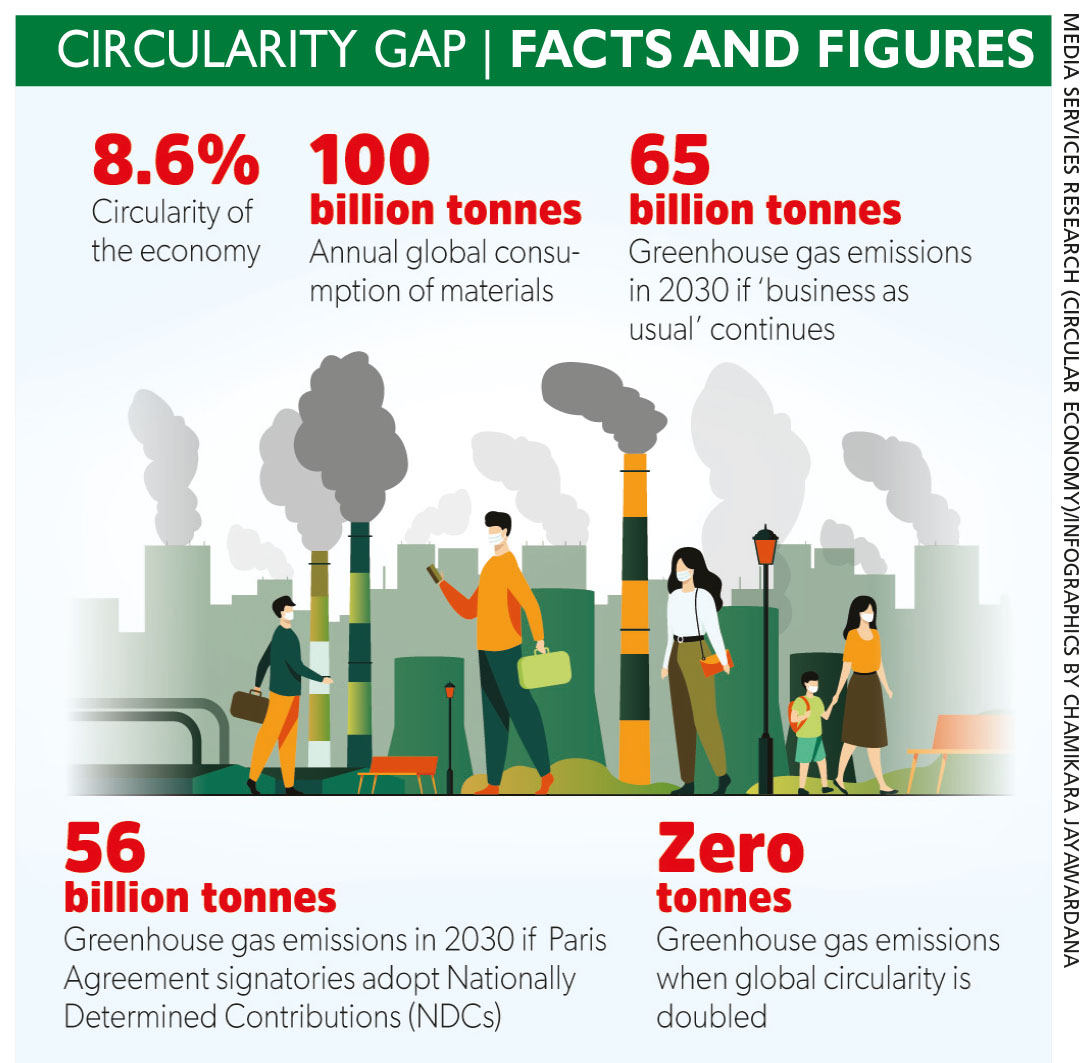SUSTAINABLE ECONOMY
ALL THINGS CIRCULAR
Act responsibly to sustain the planet – Kiran Dhanapala
 The Circularity Gap Report 2021 has found that the global economy is only 8.6 percent circular. This figure has decreased from 9.1 percent in 2018 when the world economy was first assessed. And there’s a big gap between where we are now and where we need to go – a.k.a. as the Circularity Gap.
The Circularity Gap Report 2021 has found that the global economy is only 8.6 percent circular. This figure has decreased from 9.1 percent in 2018 when the world economy was first assessed. And there’s a big gap between where we are now and where we need to go – a.k.a. as the Circularity Gap.
Circularity includes new business models that reward resource efficiency and innovative designs, which build circularity into products and processes. Rather than focussing only on innovation, technology and so on, the social side is also addressed.
This is called a human centred Circular Economy (CE) model that centres not only on jobs and material management but also provides access to the benefits of these new models. This is in a post-pandemic context of increasing importance of the ‘S’ (‘Social’) in Environmental, Social and Corporate Governance (ESG).
 It means that rather than only focussing on supply chains and sourcing virgin materials, it looks responsibly at the life cycles of the products including conditions where a ragpicker or child disassembles a phone or minerals sourced using child labour in a conflict area.
It means that rather than only focussing on supply chains and sourcing virgin materials, it looks responsibly at the life cycles of the products including conditions where a ragpicker or child disassembles a phone or minerals sourced using child labour in a conflict area.
It also means that corporates are partnering with waste collecting communities and NGOs, as part of the social infrastructure required for solving waste and recovery solutions.
Circularity has embraced human rights, inclusion and social equity. An example is HP’s investment in a new plastic washing line in Haiti that supported the collection of ocean bound plastic that was bought from local business for use in its packaging. This means that HP has reliable post-consumer recycled plastics (i.e. not virgin) and also creates new jobs in Haiti by expanding its recycling capabilities.
At a policy level, this is also seen in the European Green Deal with an emphasis on an integrated approach in the Circular Economy Action Plan. This accounts for economic and social opportunities through circular value chains that estimate 700,000 new jobs in Europe by 2030. Inspiring examples of circularity across sectors are found on the EC’s website by the European Circular Economy Stakeholder Platform, which is a joint initiative by the European Commission, and the European Economic and Social Committee.
The good practices site is open for guideline-based submissions on relevant practices, innovative processes and learning by experience examples from all sectors especially companies.
Sustainability is also about enhancing resilience. The CE can boost resilience (although not automatically) by using three features – viz. decentralisation, resource efficiency and transferable skills.
Decentralisation can bring governance closer to local communities and stakeholder participation. This means working with multiple stakeholders including social enterprises, civil society organisations and those close to the community.
Resource efficiency or using fewer resources for producing the same output means less reliance on global supply chains. Couple efficiency gains with diversity – for example, different kinds of power sources. Or couple efficiency with diversity in regenerative practices such as a shift from monocropping to multi and intercropping to improve soil health while diversifying farmer incomes.
Enabling staff to build transferable and adaptable skills means increasing their flexibility between tasks, roles, sectors and so on. This enables your organisation to pivot more easily to new and profitable opportunities.
Promote continuous learning and adaptation, as well as participatory exercises, while also differentiating between what level of resilience you seek to focus on such as from a shock, adaptability etc.
The circular economy is closely intertwined with climate mitigation and closing the emissions gap. Given the climate breakdown and its increasing impacts, only a major transformation in systemic thinking can effect change. This is the shift to the circular economy.



